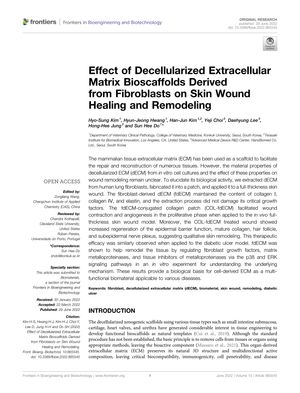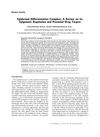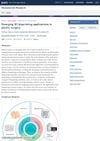Effect of Decellularized Extracellular Matrix Bioscaffolds Derived from Fibroblasts on Skin Wound Healing and Remodeling
June 2022
in “
Frontiers in bioengineering and biotechnology
”
decellularized extracellular matrix dECM fibroblasts COL-fdECM wound contraction angiogenesis epidermal barrier collagen hair follicles subepidermal nerve plexus skin remodeling diabetic ulcer fibroblast growth factors matrix metalloproteinases tissue inhibitors of metalloproteinases p38 signaling pathway ERK signaling pathway extracellular matrix ECM skin patch wound healing skin regeneration skin repair diabetic wound growth factors MMPs TIMPs p38 pathway ERK pathway

TLDR A patch made from human lung fibroblast material helps heal skin wounds effectively, including diabetic ulcers.
Decellularized extracellular matrix (dECM) derived from human lung fibroblasts was used to create a patch (COL-fdECM) that, when applied to full-thickness skin wounds, facilitated wound contraction, angiogenesis, and improved regeneration of the epidermal barrier, mature collagen, hair follicles, and subepidermal nerve plexus, indicating effective skin remodeling. This was also effective in a diabetic ulcer model. The study suggests that fdECM promotes tissue remodeling by affecting fibroblast growth factors, matrix metalloproteinases, and tissue inhibitors of metalloproteinases through the p38 and ERK signaling pathways. This supports the use of cell-derived ECM as a versatile biomaterial for treating various diseases.



